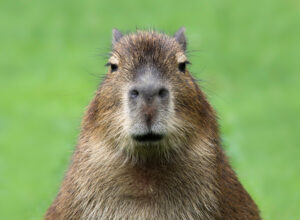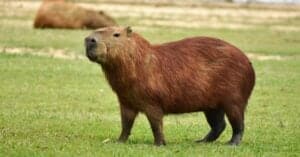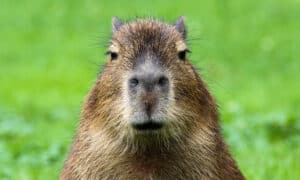Today, we’ll learn about the capybara, a big South American rodent. It belongs to the Caviidae family and is the world’s largest living rodent. This unusual rodent resembles a hairy pig with a snout, but there are many more interesting characteristics about it. Let’s learn 10 incredible facts about the capybara!
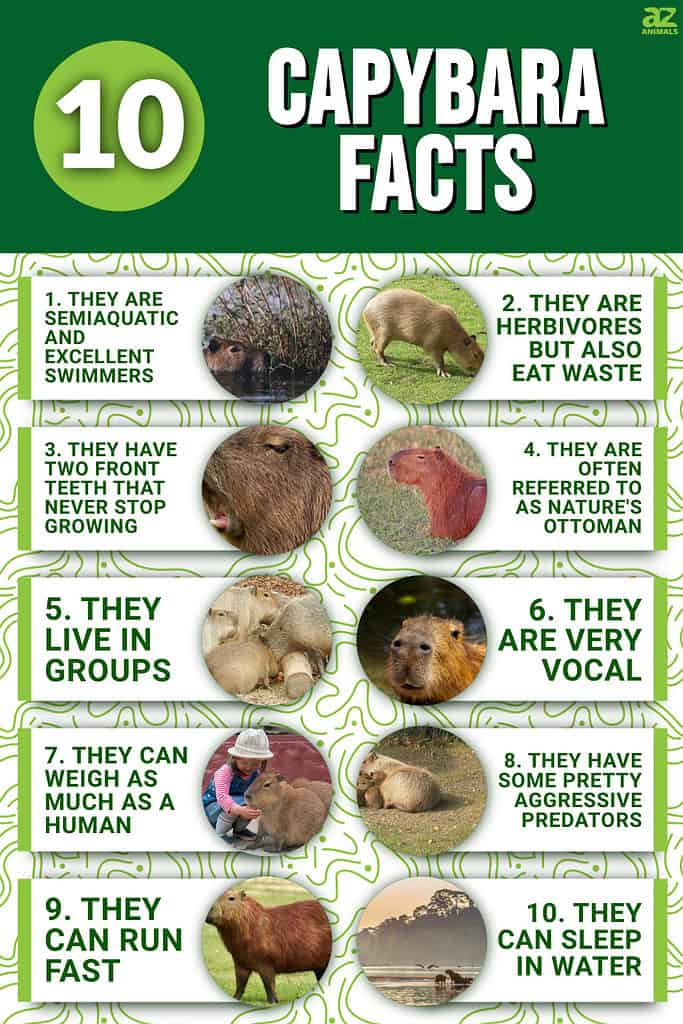
1. They Are Semiaquatic And Excellent Swimmers
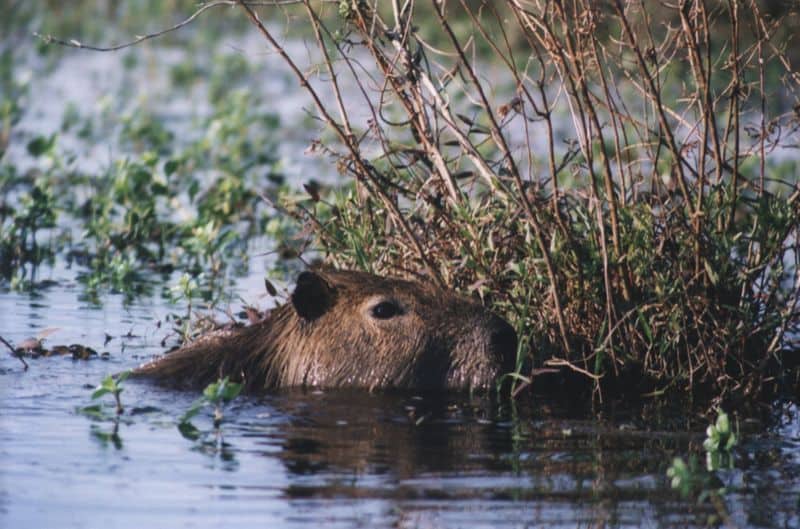
Capybaras are good swimmers,
Capybaras spend a lot of their time in or around water. Because of their webbed feet, this makes them excellent swimmers as well! They keep their heads above the surface while swimming to breathe and be alert. Although their heads stay above water, they can also dive. They prefer freshwater sources in both Central and South America. These large rodents need water to keep their dry skin moist.
2. They Are Herbivores But Also Eat Waste
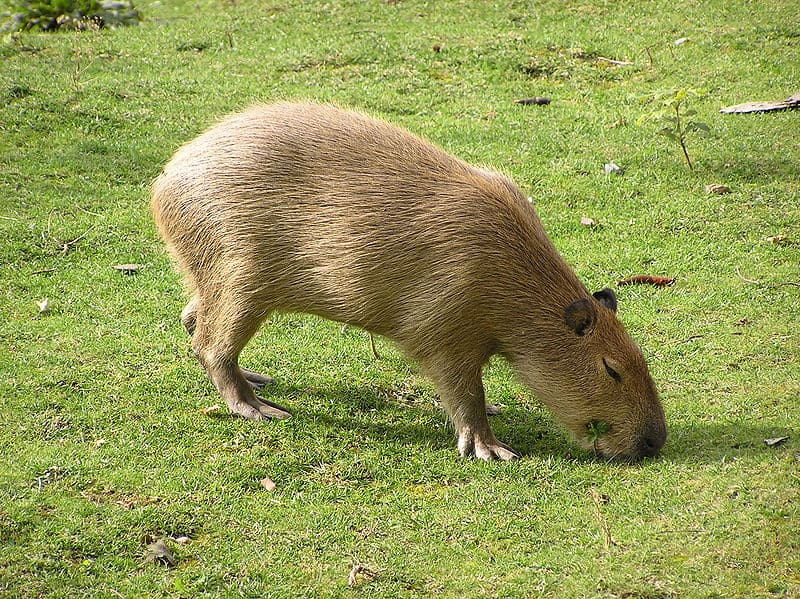
Capybaras can eat their waste.
Capybaras primarily eat vegetation that lines water surfaces and grass. In fact, an adult capybara can eat up to 6-8 lbs. of food per day, and not only that, but they can also eat their own waste. Although this may sound disgusting to many, their waste contains beneficial bacteria and properties that help them break down the fiber that they get from eating grass.
3. They Have Two Front Teeth That Never Stop Growing
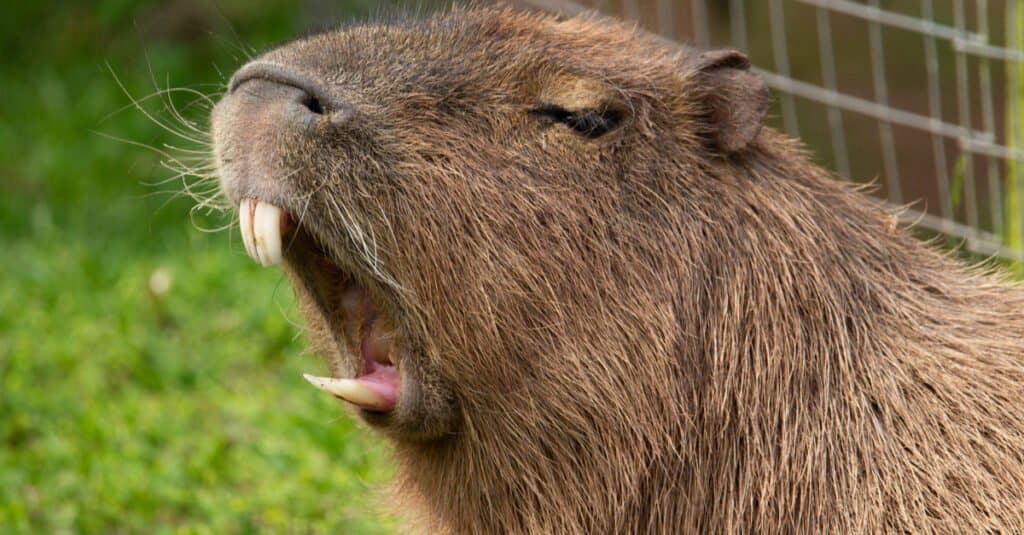
Capybaras show their rodent characteristic with their continuously growing teeth.
©Ian Peter Morton/Shutterstock.com
Like most rodents, capybaras also have two large front teeth that never stop growing. Because they spend a lot of their time using their teeth on bark, sugar canes, and vegetation, their teeth need to be able to withhold such activities, thus growing to replace the parts of their incisors that break down from their hard labor. They can grow over three inches and are relatively sharp to cut through both vegetation and bark.
4. They Are Often Referred To As Nature’s Ottoman
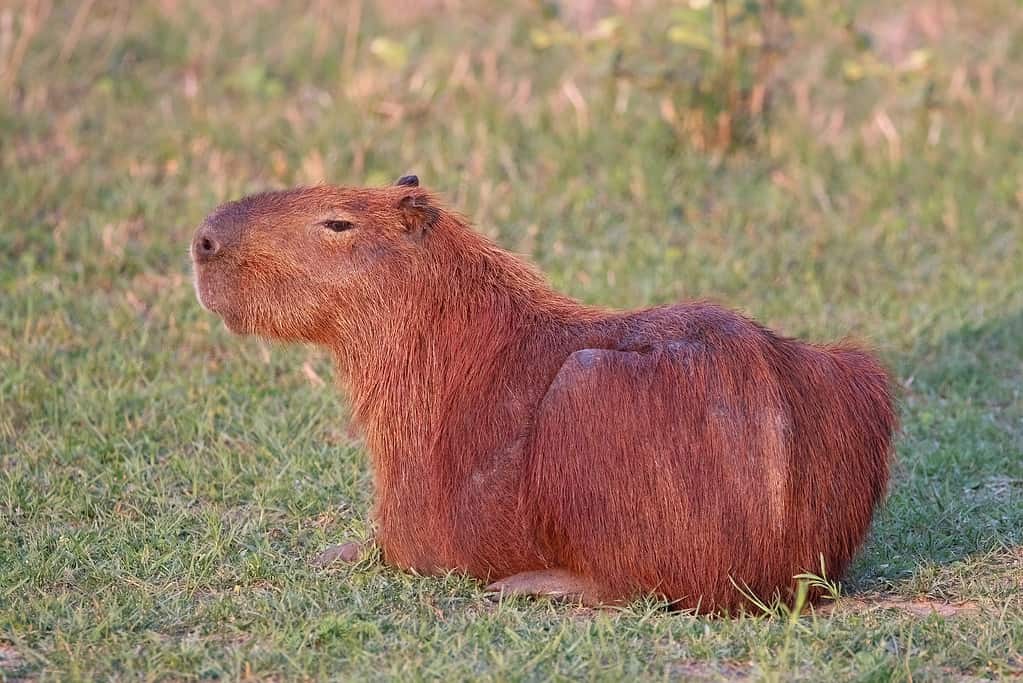
Other animals use the capybara as a chair.
©Charles J. Sharp, CC BY-SA 4.0 – License
One of the most interesting things about capybaras is that they are often labeled as nature’s ottoman because so many animals love to take a rest on them. Because they share habitats with many other creatures, their docile and tolerant behavior allows smaller animals to sit on top of them to gain rest. They have barrel-like backs that are the perfect post for other small mammals and birds, not to mention that capybaras are also incredibly social animals and love the company!
5. They Live In Groups
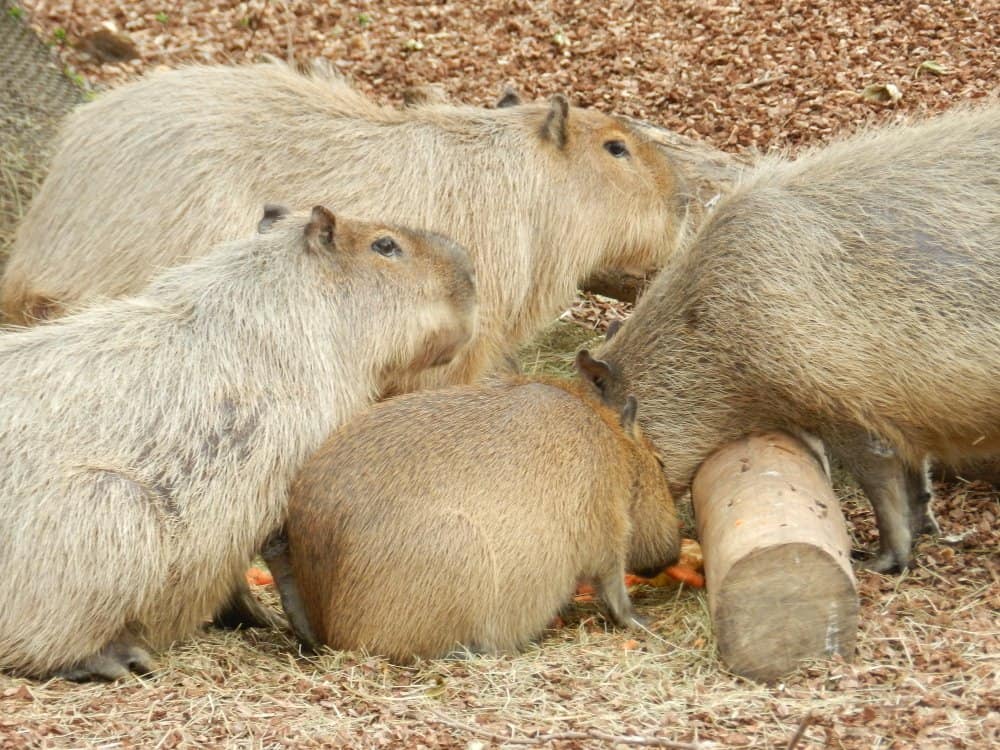
Capybaras are always found in groups.
©Millie Bond – Copyright A-Z Animals
Capybaras, like many other rodents, live in large groups. They need socialization and will usually be found in groups of 10 other capybaras; however, during wet seasons, they can be found in groups of upwards of 40. These groups usually consist of one dominant male, females, and subordinate males, as well as their young. It is very unlikely to find a capybara ever traveling alone.
6. They Are Very Vocal
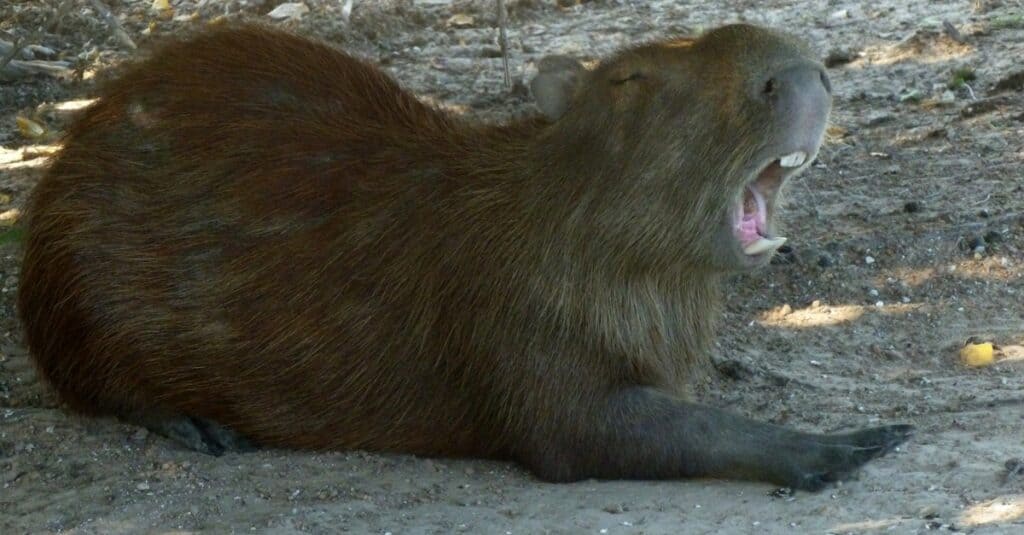
Capybaras use various vocalizations.
©iStock.com/nastenkin
Not only are they social, but the capybaras are also very vocal. In fact, these animals make a series of noises, chirps, and barks included! They use these noises as a form of communication, alert to their group, and as a defense mechanism. Apart from chirping and barking, they can also make a purring sound and grunt as a form of communication. When a group of them are together, you can often hear them let out a series of chirps, almost as if they are singing.
7. They Can Weigh As Much As A Human
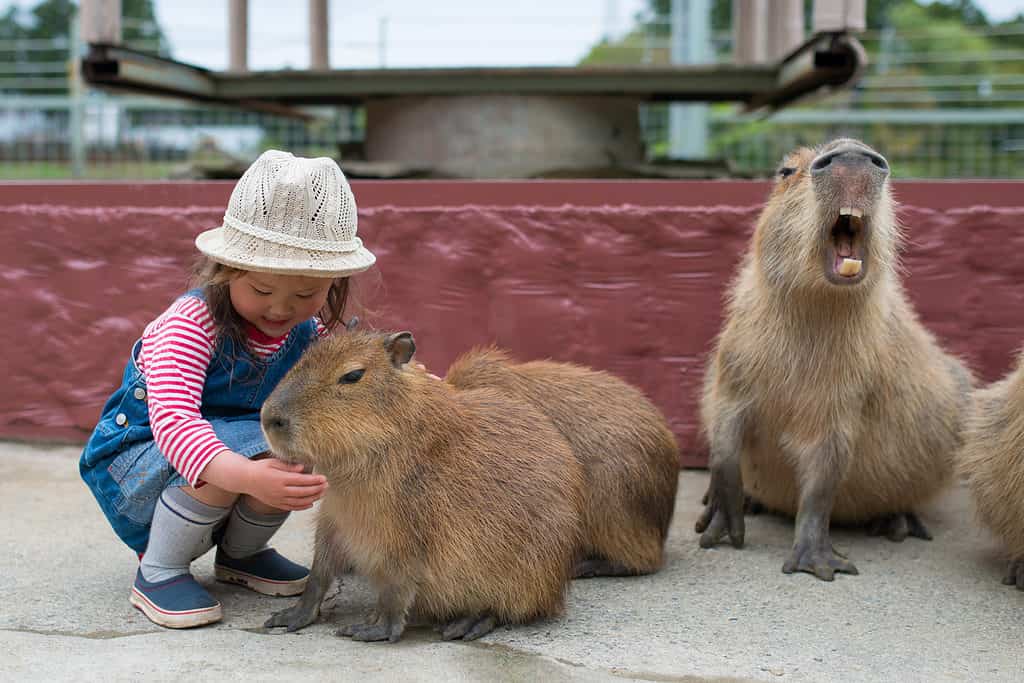
Capybaras are sweet and gentle creatures and can form strong bonds and attachments with their owners and other animals around them.
©Purino/Shutterstock.com
Since capybaras are the largest rodents alive, that means that they can be heavy. Almost as heavy as a human, most adult capybaras can weigh anywhere from 77-150 lbs. Females are usually a little larger than males, often weighing anywhere between 60-175 lbs.
8. They Have Some Pretty Aggressive Predators
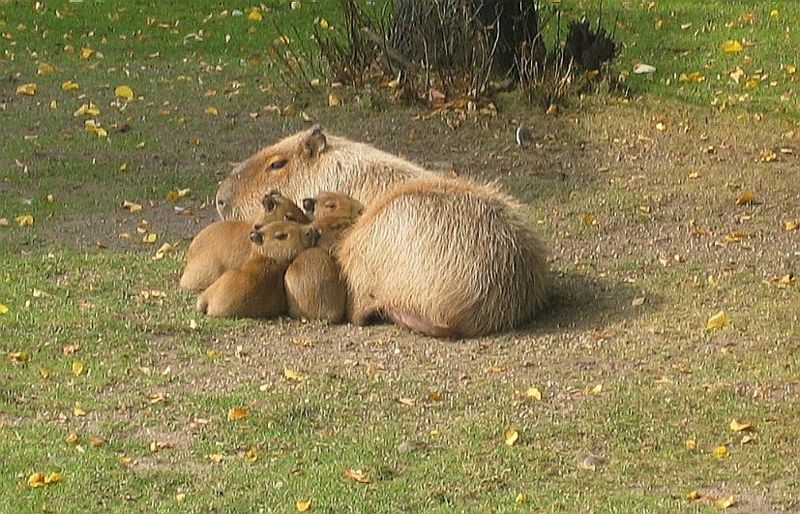
Capybaras are the prey of animals like jaguars and ocelots.
©Bradypus / CC BY-SA 3.0 – License
Although capybaras are big animals, that doesn’t mean that they do not have any natural predators. In fact, capybaras have some pretty aggressive predators in the wild. Their natural predators are jaguars, caimans, and anacondas. Ocelots and harpy eagles can also hunt their young.
9. They Can Run Fast
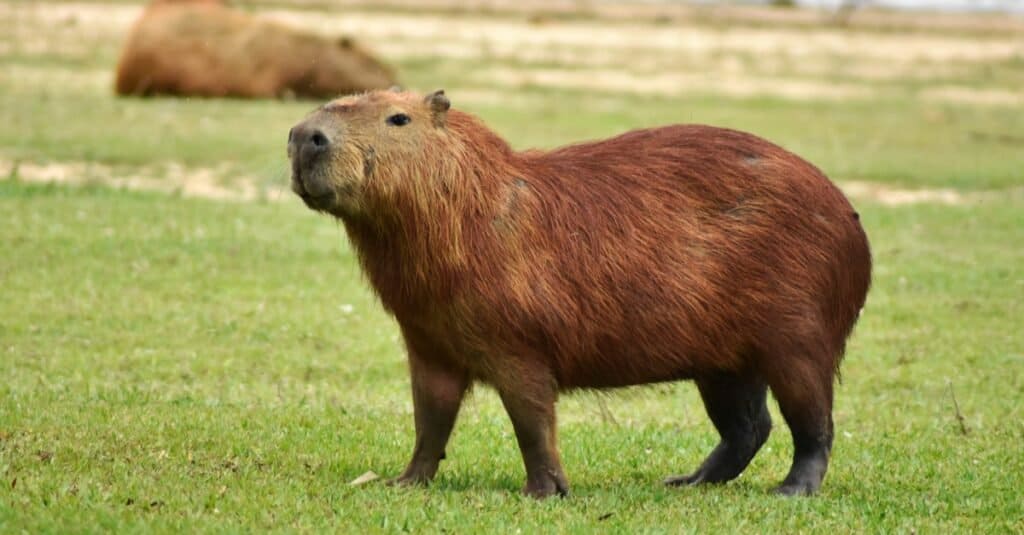
They can run up to 22 mph, about the average speed of a domesticated dog.
©Horus2017/Shutterstock.com
Because capybaras have such aggressive natural predators, that means they need to flee very quickly when a threat is nearby. Capybaras are fast for both their size and their species. They can run up to 22 mph, about the average speed of a domesticated dog. This is impressive given the fact that they have both large heads and bodies.
10. They Can Sleep In Water

Capybaras can sleep in the water.
©RPBaiao/Shutterstock.com
Because capybaras are semi-aquatic and spend a lot of time in the water, you can often find them sleeping in the water! Though it’s not known to last long, they have been caught taking short naps in the water with their large heads sticking out to breathe and the bodies submerged below. They can stay underwater for up to five minutes at a time, so it’s common to find these large rodents taking a quick nap after a vigorous dive or swim. This also helps them to stay cool.
The photo featured at the top of this post is © Pertfoto/Shutterstock.com
Thank you for reading! Have some feedback for us? Contact the AZ Animals editorial team.



